The R10 and R100 are both recent cameras released by Canon to expand its EF-mount APS-C segment, as well as offer multiple solutions for those with a restricted budget.
The R10 has more modern technology and advanced features, whereas the R100 has been designed to cut production costs as much as possible. Let’s see how they compare!
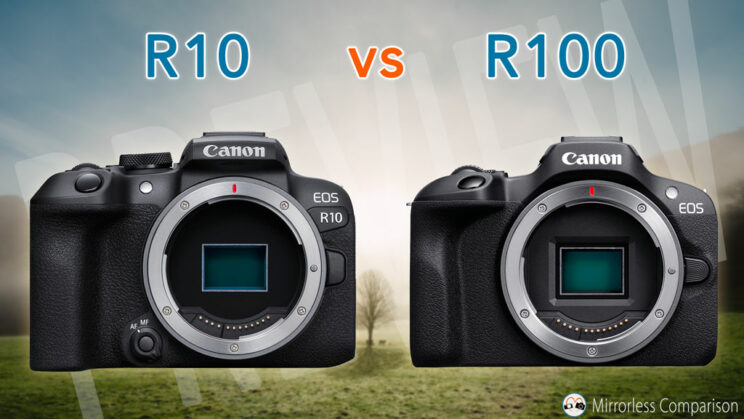
Additional comparison previews:
R10 vs R100
Ethics statement: the following is based on official specs from the Canon website. We were not asked to write anything about these products, nor were we provided any compensation of any kind. Within the article, there are affiliate links. If you buy something after clicking one of these links, we will receive a small commission. To know more about our ethics, you can visit our full disclosure page. Thank you!
1. Image Sensor
Both cameras feature an APS-C sensor (1.6x crop factor in comparison to full frame) with roughly the same number of pixels: 24.2MP for the R10, 24.1MP for the R100.
The sensor found inside the R10 is more recent, a new version with upgraded micro lenses and circuitry with the aim of enhancing quality and performance. The R100 sensor is more similar to older EOS M cameras such as the M50 and M50 mark II.

The R10 sports a faster image processor, the Digic X, whereas the R100 uses the older Digic 8. This, combined with the more powerful sensor, gives the R10 a variety of advantages in addition to an image quality boost, as we’ll see further down.
Concerning the ISO sensitivity, the R10 has a wider range:
Camera
Normal range
Extended range
R10
100 – 32,000
51,200
R100
100 – 12,800
25,600
Note that in movie mode, the R10 range is the same as the R100: up to 12,800 (normal), or 25,600 ISO (extended).
2. Autofocus System
The R10 packs some of the advancements Canon has to offer when it comes to autofocus. You get the Dual Pixel CMOS AF II system (phase detection) and deep learning capabilities that enable the camera to recognise and track humans, as well as a variety of animals and vehicles.
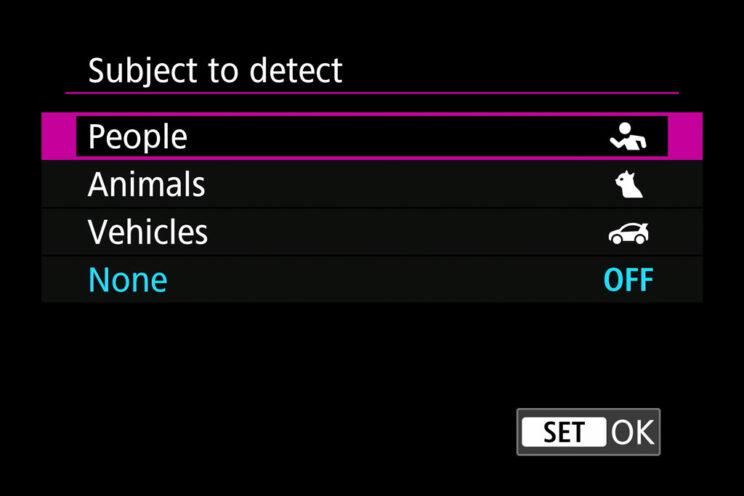
The R100 has an older system (Dual Pixel CMOS AF mk1), and the software only allows for human detection (face and eyes).
The general tracking capabilities of the R10 are more advanced also thanks to the higher number of points used: 651 vs 143 on the R100.
In low light, both cameras are rated at -4EV, ISO 100 and f/1.2 aperture.
Another, rather annoying limitation on the R100 is that during 4K video recording, the Dual Pixel CMOS AF is disabled. Instead, the camera works with contrast detection AF, which is slower and less efficient with moving subjects.
3. Speed
Another striking difference concerns the shutter and drive speed.
Both cameras work up to 1/4,000s when using the mechanical shutter, but the R10 can go faster when you activate the electronic shutter: 1/16,000s.
Then we have continuous shooting: the R10 goes up to 15fps (mechanical) or 23fps (electronic shutter). These are valid whether you work in single AF (One Shot) or continuous AF (Servo).

The R100 pales in comparison: 6.5fps with One-Shot AF, or 3.5fps with continuous AF.
4. Movie Recording
The two cameras can record 4K and Full HD video, but there are important characteristics that set them apart.
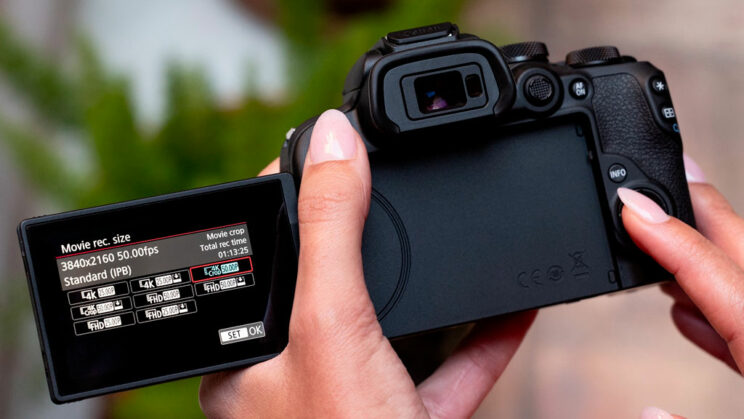
Let’s begin with 4K: the R10 goes up to 60p, the R100 does 24 or 25p only.
The R10 records 4K up to 30p without sensor crop (full width used, plus oversampling which means very good quality). If you want 50 or 60p however, there is a heavy 1.6x crop.
The R100 crops by 1.6x in 24/25p and, as stated earler, you don’t get phase detection AF in 4K, so tracking the face and eyes of subjects will be more reliable on the R10.
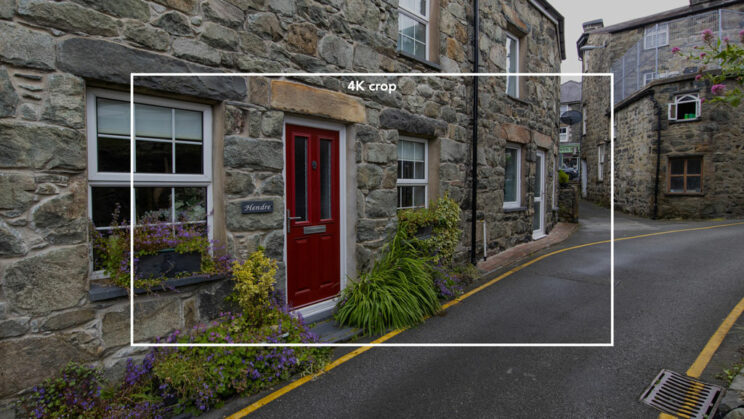
In 1080p, both cameras work up to 60p without a crop. The R10 can also record up to 120fps with the High Speed mode. The same option is available on the R100 but at a lower resolution (720p).
The differences don’t end here: the R10 can record 10-bit 4:2:2 internally (when using the HDR PQ profile), and that means more colour information in your video files. The R100 is an 8-bit camera.
Finally, the R10 doesn’t have the 30 minute / clip limitation found on the R100. How long your can record without interruption will depend on the ambient temperature (Canon said approx. 50 minutes at 23˚C).
5. Design
The R100 is a bit smaller and lighter than the R10. Neither of them come with weather sealing.
- R10: 122.5 x 87.8 x 83.4mm, 429g
- R100: 116.3 x 88.1 x 58.7 mm, 356g
The R10 has more controls, like the AF/MF switch located on the front of the camera, the handy AF joystick at the back, and one extra dial on top.
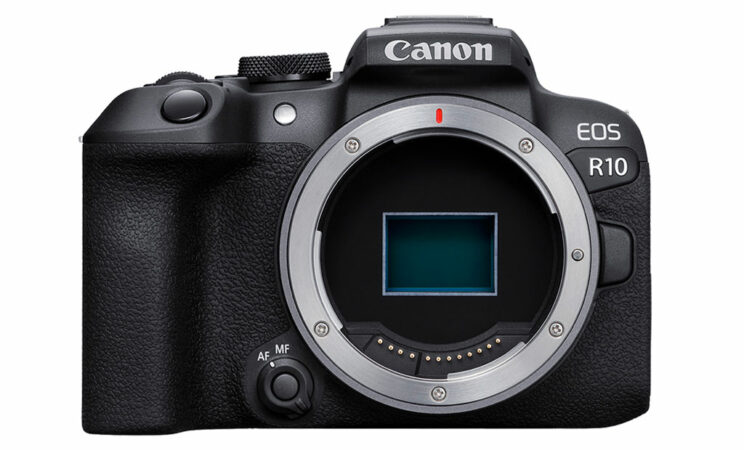
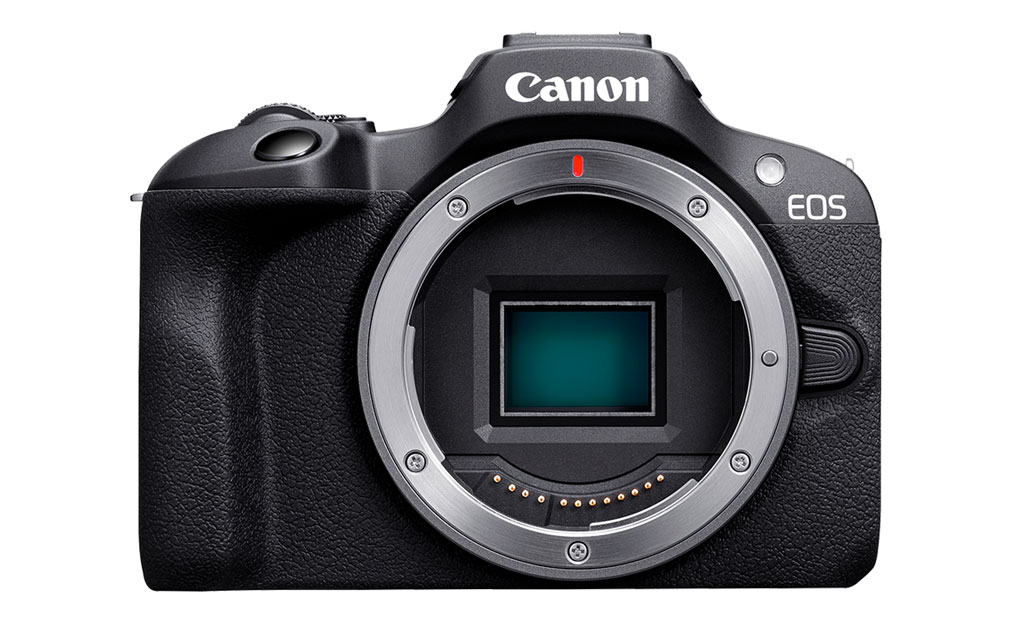
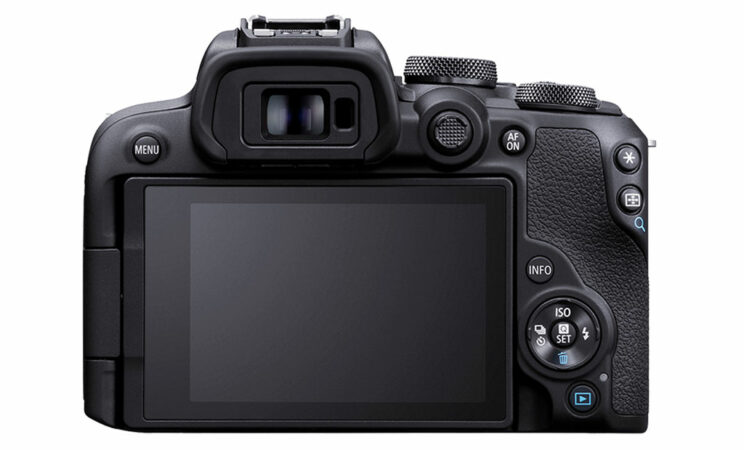
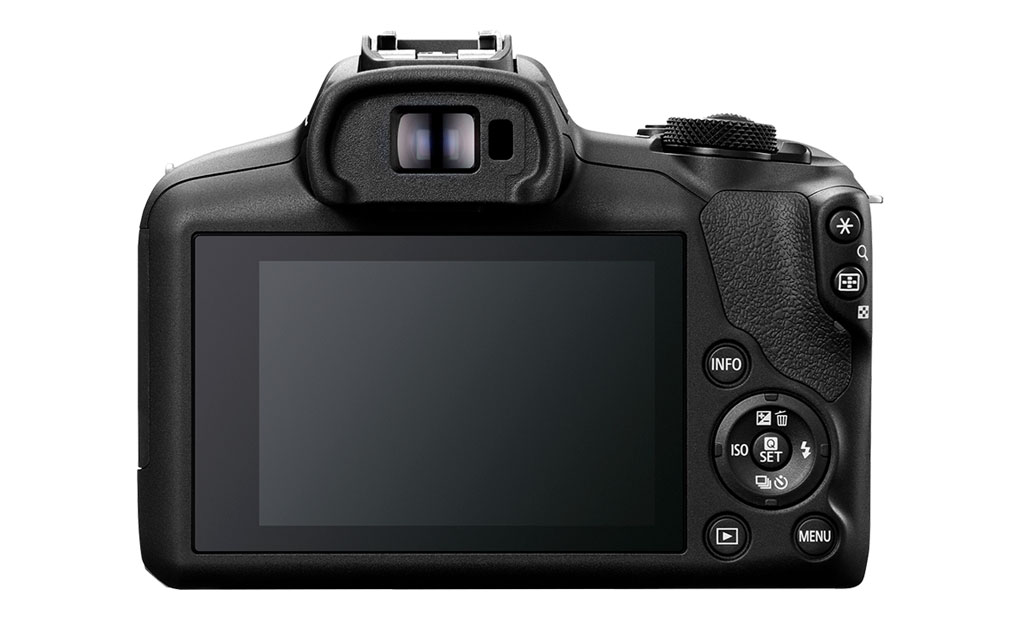
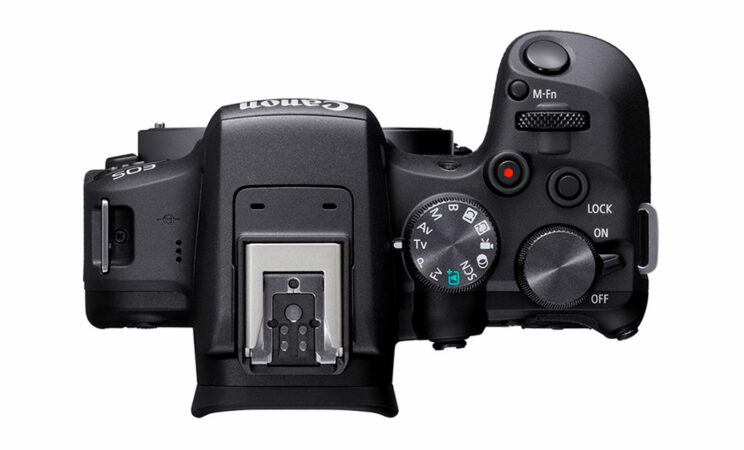
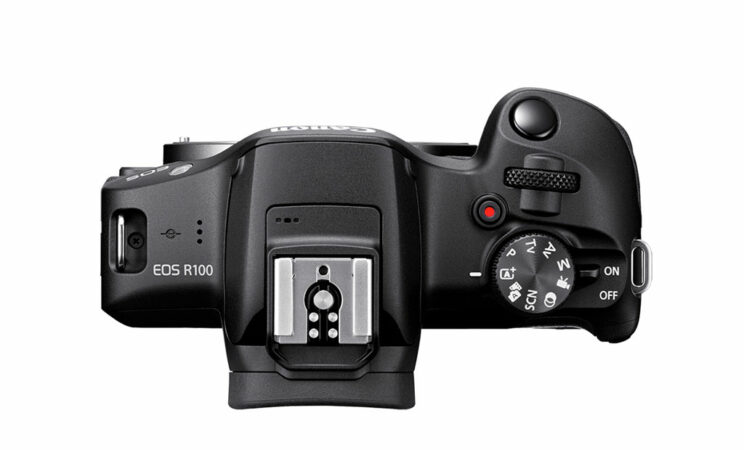
6. Viewfinder and LCD Monitor
The viewfinder is very similar on the two cameras:
- 0.39-in OLED
- 2.36M dots
- 22mm eyepoint
- 0.59x magnification
The only difference is the frame rate, which is higher on the R10 when using the Smooth setting (120fps vs 60fps).
A bigger difference is found on the rear with the 1.04M dots LCD screen : that of the R100 is fixed, and doesn’t have touch sensitivity. On the R10, you can open the screen and rotate it 180˚, as well as use your finger to change settings, take a picture or set the AF area.
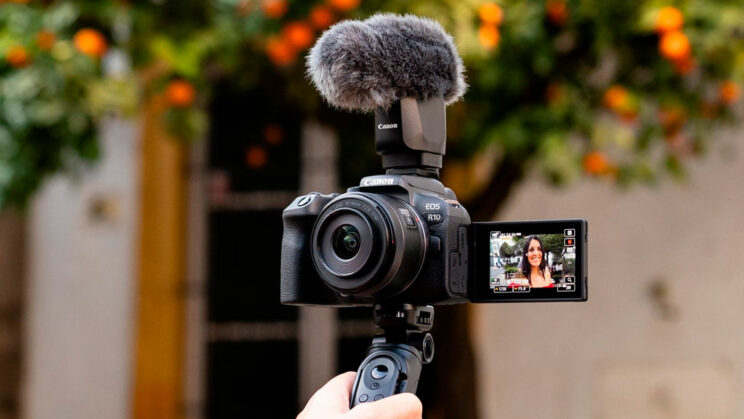
7. Tidbits
The R100 is more recent than the R10, but lacks extra features in comparison.
For example, the R10 comes with the Pre-Shooting mode: a number of files are saved before you fully press the shutter button, very handy to capture action that is difficult to predict.
You will also find focus bracketing and focus stacking options, useful for landscape and macro photogaphy.
Last, the R10 can record in the 10-bit HEIF format, in addition to RAW and JPG.
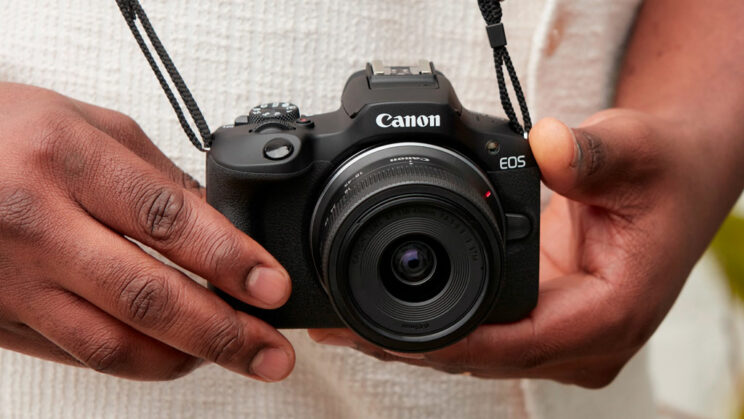
8. Memory and Connections
There is only one SD card slot on each camra, but that of the R10 is UHS-II compatible, which means you can used faster cards.
On the side, each model offers a 3.5mm microphone input, a Micro HDMI output, a USB C port and a 2.5mm remote input.
The difference is found with the USB port: on the R100, battery charging is not supported.
9. Battery
Speaking of the battery, both cameras use the same unit, the LP-E17, but the rating is a bit different.
The R10 can take 260 shots with the EVF, or 430 shots with the LCD, on a single charge.
The R100 has a better rating with the EVF (320 images), but a bit less with the rear screen (400 photos).
Remember that these specs rarely reflect real world use, where you can save more photos before the battery runs out.
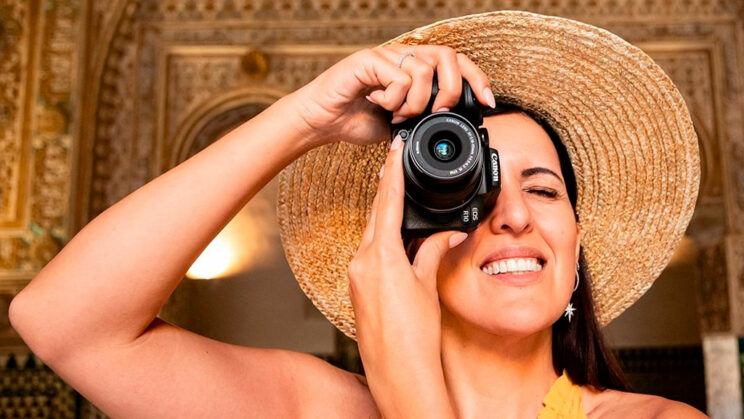
10. Price
The R10 can be bought with the 18-45mm kit lens for $1000 / £1100 / €1080.
With the same lens, the R100 costs less: $600 / £670 / €700.
Additional comparison previews:
R10 vs R100
First Thoughts
With the R100, Canon decided to use old hardware to keep the cost down, making the camera the least expensive entry level model in the EOS R line-up. It’s a decent idea on paper, but I wish the user experience had not been sacrificed so much: a fixed screen with no touch sensitivity is a bit silly in 2023. If you want to enter the RF-mount world with the lowest investment possible, then the R100 fits the bill. But if you look outside what Canon has to offer, there are more interesting products to pay attention to, even second-hand.
As for the R10, it is more expensive but packs much better performance: no crop in 4K video (and with faster AF), a more modern sensor, more advanced subject detection, a faster drive speed, and the list goes on.
Check price of the Canon R10 on
Amazon | B&H Photo | eBay
Check the price of the Canon R100 on
B&H Photo


